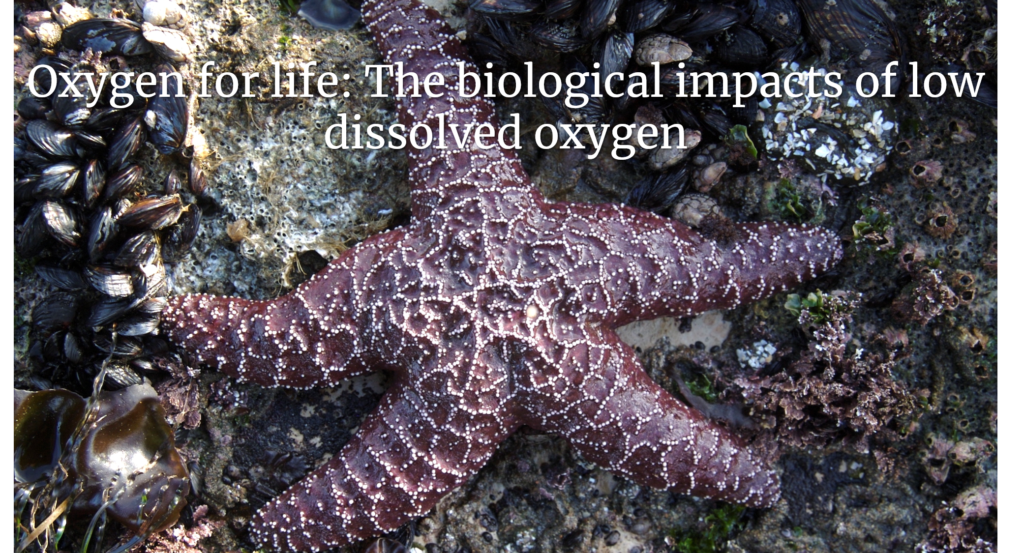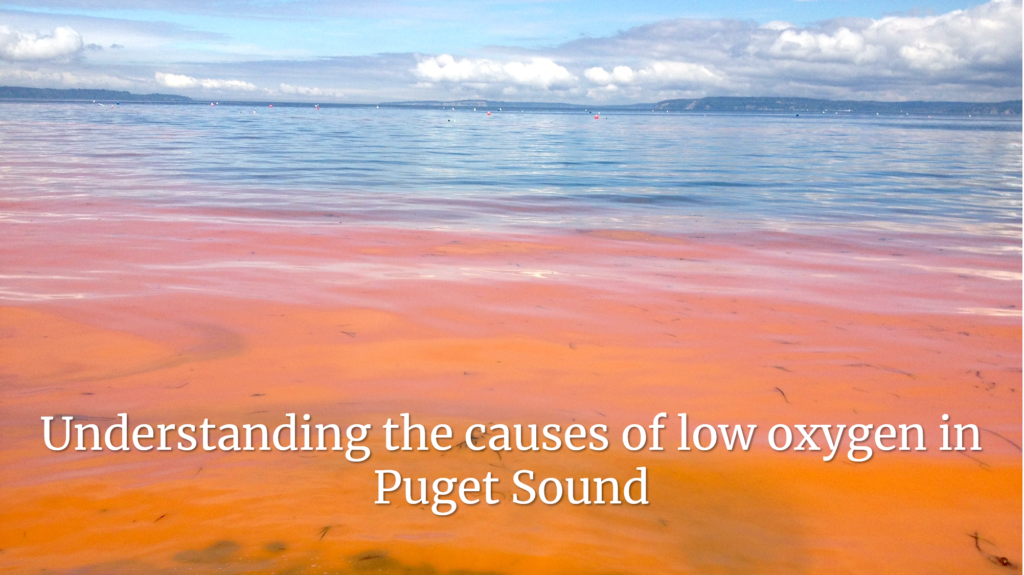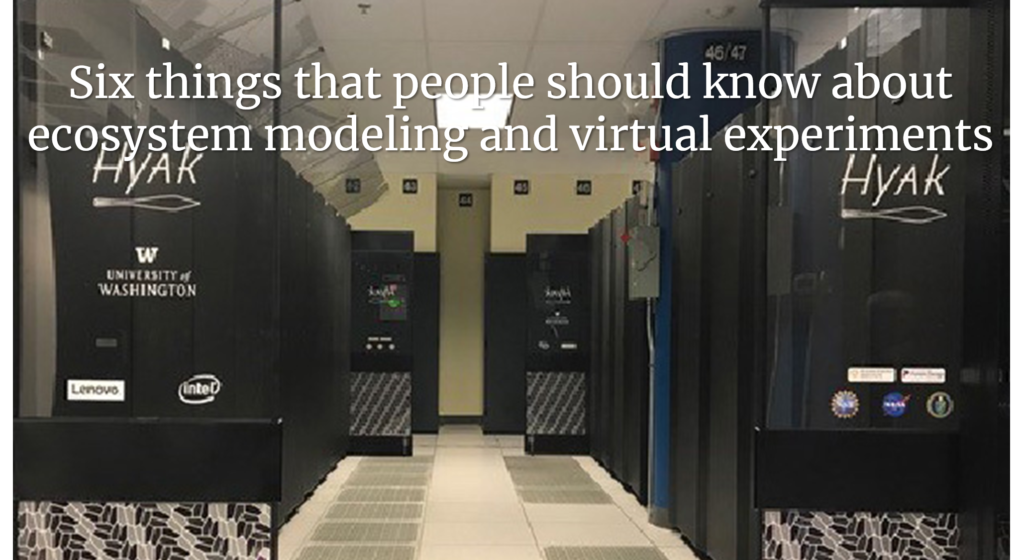The Challenge
Our region is navigating complex decisions on how best to manage nitrogen, low dissolved oxygen, and the potential impacts on marine life in Puget Sound. The cumulative effect of multiple stressors like climate change and emerging contaminants make it challenging to optimize solutions to address a range of water quality issues that affect orca and salmon recovery.
The nutrient management decisions we make now have the potential to shape the future of wastewater treatment, water quality, and our communities for decades to come. New regulation is prompting historic investments in nutrient management, including billion-dollar wastewater treatment plant upgrades. These upgrades will likely increase utility rates throughout the region and may create a hardship for low-income households.
UW Puget Sound Institute is collaborating with experts locally and globally to advance the science to inform these important decisions. Thankfully, environmental leaders in the region have created a strong foundation to build on, including the Washington State Department of Ecology Puget Sound Nutrient Reduction Project. In developing the forthcoming Puget Sound Partnership Marine Water Quality Implementation Strategy1 & 2 regional scientists also identified uncertainties and research priorities related to nutrients and dissolved oxygen. Puget Sound Institute is helping to address some of these priorities with support from King County and municipalities in the Puget Sound Clean Water Alliance.
Our research is currently focused on when and where marine life is most vulnerable to the synergistic changes in dissolved oxygen and warming waters.
Continue reading below to:
- Learn more about the role of nutrients in Puget Sound
- Explore model scenarios focused on informing nutrient management, including wastewater treatment plants’ optimization and capital investments
- See the Model Evaluation Group’s recommendations to improve the application of the Salish Sea Model to inform recovery goals and nutrient management decisions in Puget Sound
- Watch regional workshops discussing key scientific uncertainties
Learn more about nutrients
New to nutrients? Check out some recent articles for context on important considerations.
Modeling
In 2020, Puget Sound Institute helped launch the Salish Sea Modeling Center. The Salish Sea Model builds on monitoring data to predict water quality throughout Puget Sound, on an hourly basis. We can also use models to research why changes are happening, explore what the future might look like, and estimate the potential impact of management actions. In parallel, the Department of Ecology is applying the Salish Sea Model to understand and regulate nutrients. Puget Sound Institute’s analysis uses a consistent version of the Salish Sea Model and intends to build on and complement Ecology’s 2021 Optimization Scenario results and planned modeling.
Other models like LiveOcean and SalishSeaCast also help deepen our scientific understanding to inform management actions.
Model Scenarios
The following reports assess the magnitude of change in dissolved oxygen concentrations in Puget Sound resulting from reducing or increasing nitrogen loading from specific locations and source types (e.g., wastewater treatment plants and rivers). The scenarios are designed to explore the response of the modeled water quality parameters to large systematic changes in nutrient loads. These scenarios are not designed to evaluate any specific engineering controls or management actions, but rather provide insight to the sensitivity of dissolved oxygen levels to altered anthropogenic nutrient loadings.
By sharing our model analysis and postprocessing scripts, we hope to spark robust scientific discussion and co-development.
Model Evaluation Group
Complex environmental challenges benefit from insights and ongoing advice from scientists in other regions like the Chesapeake Bay and the Baltic, where models have been used to manage nutrients for decades. The University of Washington Puget Sound Institute convened global experts to advise on how to improve the application of the Salish Sea Model to inform recovery goals and nutrient management decisions in Puget Sound. We were lucky to benefit from the expertise of Bill Dennison, Jacob Carstensen, Jeremy Testa, Kevin Farley, and Peter Vanrolleghem.
Meet the Model Evaluation Group
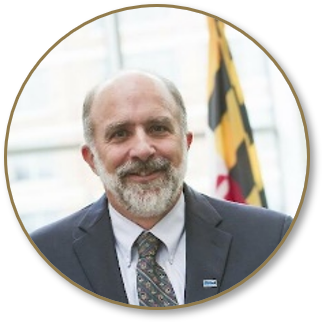
Bill Dennison
Chairs the Science and Technical Assessment & Report team of the Chesapeake Bay Program, pioneering the use of environmental report cards in studies globally.
Bill Dennison leads the Integration and Application Network (IAN), a collection of scientists interested in solving, not just studying environmental problems. He was involved for ten years with the Healthy Waterways program in Queensland, Australia where an annual environmental report card has been produced since 2000. He joined the University of Maryland Center for Environmental Sciences in 2002 and is the inaugural chair of the Science and Technical Assessment & Reporting team of the Chesapeake Bay Program. Bill and his team of Science Integrators and Science Communicators have produced the Chesapeake Bay report card since 2006 and are involved in a suite of other regional environmental report cards with citizen science teams and various organizations.
Selected Publication: Environmental problem solving in coastal ecosystems: A paradigm shift to sustainability.
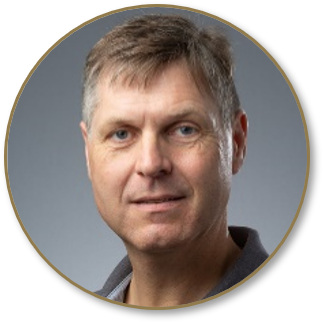
Jacob Carstensen
Collaborates on the Baltic Nest Institute that provides scientific input to countries engaged in the Baltic Sea Action Plan. Jacob’s research focuses on quantifying hypoxia and broader water quality issues and their drivers.
Jacob Carstensen collaborates with the Baltic Nest Institute, a partnership between Aarhus University, Stockholm University, and Finnish Environment Institute providing scientific input to HELCOM and national agencies as support for environmental policies in the Baltic Sea. His research has focused on assessing human impacts on marine ecosystems and identifying management responses to maintain good ecosystem functioning. Much of his research has been applied to the European Water Framework Directive, Marine Strategy Framework Directive, and HELCOM Baltic Sea Action Plan as well as national regulations. Jacob has published more than 160 papers in peer-reviewed journals, which have been cited ~14,000 times.
Selected Publication: Connecting the Dots: Responses of Coastal Ecosystems to Changing Nutrient Concentrations
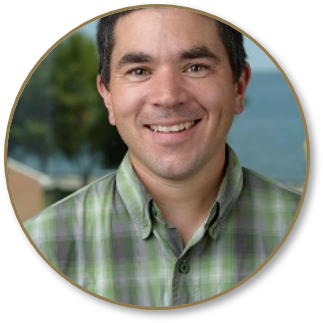
Jeremy Testa
Associate Professor at University of Maryland Center for Environmental Science Chesapeake Biological Laboratory
Addresses critical challenges in biogeochemistry and dissolved oxygen modeling relevant to management, including predictive accuracy and uncertainty.
Jeremey Testa’s research focuses on coastal marine ecology, with an emphasis on the processes of eutrophication, nutrient cycling, dissolved oxygen dynamics, and ocean acidification. His group is especially interested in the interactions between biological, chemical, and physical processes in coastal ecosystems. They use a combination of experimental efforts, historical data analysis, and coupled biogeochemical-hydrodynamic modeling studies to examine these aspects of estuarine and coastal aquatic science.
Selected Publication: Inferring controls on dissolved oxygen criterion attainment in the Chesapeake Bay

Kevin Farley
Professor and the Blasland, Bouck and Lee Faculty Chair at Manhattan College
Advises the NY-NJ Harbor Estuary Program and has served on several national and international scientific review panels related to water quality and modeling, including for the Environmental Protection Agency (EPA), National Research Council, and United Nations Environment Programme (UNEP).
Kevin Farley researches and has served as a technical advisor on issues related to water quality, water quality modeling, sediment contamination, bioaccumulation of toxic contaminants, and metals. This has included serving on scientific review panels for the EPA Chesapeake Bay Program, the National Research Council Committee on Remediation of PCB-Contaminated Sediments, the EPA Science Advisory Board panel reviewing the agency’s risk assessment framework for metals, and the UNEP International Panel for Sustainable Resource Management Metals Workgroup. Kevin is currently serving as a member of the Science and Technical Advisory Committee for the NY-NJ Harbor Estuary Program and as a member of the Ecotoxicity Technical Advisory Panel for the international nonferrous metal industries.
Selected Publication: A Decision Support Framework to Facilitate Nitrogen Load Reductions in the Long Island Sound (LIS) Watershed

Peter Vanrolleghem
Professor at Université Laval, Canada
Chairs the Water Environment Federation (WEF) Modeling Expert Group of the Americas, and holds the Canada Research Chair in Water Quality Modelling.
Peter Vanrolleghem has published over 375 peer-reviewed papers, with a focus on modeling and control of activated sludge wastewater treatment processes, with special emphasis on model calibration and experimental design. Peter launched the BIOMATH research team that focuses on modeling methodologies for bioprocesses, mainly in environmental systems. Since 2006 he has been the Canada Research Chair on Water Quality Modeling, allowing him to start up the model EAU research team at Université Laval in Quebec City. Peter is also active on IWA’s Board of Directors, with the Réseau Environnement, and the Canadian Association on Water Quality, in addition to chairing the Modeling Expert Group of the Americas for WEF.
Selected Publication: Uncertainty in the environmental modelling process–a framework and guidance
Previous Scientific Workshops
We facilitated several workshops in 2022 to explore some of the scientific uncertainties related to nutrients and water quality. These workshops built on previous discussions like Ecology’s Nutrient Forum and the forthcoming Marine Water Quality Implementation Strategy to dig deeper into identified challenges including the “memory” in sediment oxygen demand.
We appreciate how generous numerous monitoring experts, modelers, managers, and researchers have been with their time and insights. Good science benefits from robust discussion and a range of perspectives, so we look forward to engaging with more experts and are happy to connect individually.
Consolidated workshop materials
- Kickoff: The Science of Puget Sound Water Quality 7.26.22 Slides | Summary
- Tools to Evaluate Water Quality 9.29.22 Slides | Summary
- Biological Integrity of Key Species and Habitats 10.06.22 Slides | Summary
- Sediment Exchange 10.17.22 Slides | Summary
- Phytoplankton & Primary Production 12.06.22 Slides | Summary
- Watershed Modeling 12.12.22 Slides | Summary
Have a question or interested in collaborating?
Email Stefano (mazzilli@uw.edu) and Marielle (marlars@uw.edu).

